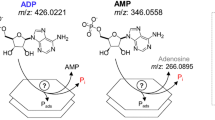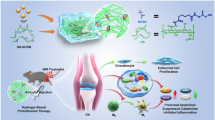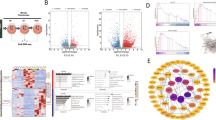Summary
Previous studies conducted in cell culture utilizing chondrocytes isolated from human articular cartilage showed that inclusion of ascorbic acid in the nutrient medium resulted in an increase in the net biosynthesis of sulfated proteoglycans concomitant with a reduction in the activities of arylsulfatases A and B. This suggested a possible connection between the stability of the sulfated macromolecules and the activity of these desulfating enzymes. To examine whether this relationship also was operative in a more native milieu, the effect of ascorbate on these parameters was measured in an organ culture system using slices of human articular cartilage where the structural extracellular framework surrounding the chondrocytes is comparable to that present in vivo. In addition, since numerous studies have shown that vitamin E inhibits lysosomal enzymes, the effect of alpha-tocopherol on these parameters was also investigated.
Concurrent with an inhibition of arylsulfatase A and B activities, an increase in sulfated proteoglycan biosynthesis per unit of DNA as reflected in35S-sulfate uptake was present in all cartilage specimens examined 6 days after the introduction of vitamin C in the culture fluid. A larger fraction of the newly synthesized sulfated macromolecules was incorporated into the matrix of the tissue in samples maintained in the vitamin-supplemented cultures.
Supplementation of the organ culture medium with vitamin E resulted in the inhibition of arylsulfatase A and no change in arylsulfatase B activities. In contrast to the action of vitamin C which stimulated acid phosphatase activity, a potent inhibition of this enzyme was effected by vitamin E.
Sulfated proteoglycan content was greatly enhanced by alpha-tocopherol, although the vitamin did not alter the distribution of the newly synthesized molecules between the tissue and medium fractions.
Inhibition of acid phosphatase and arylsulfatase A by alpha-tocopherol was evident in tissue lysates and partially purified enzyme preparations. This implies a direct interaction between the enzymes and vitamin E.
The actions of alpha-tocopherol and ascorbate on cartilage enzymes and structural components were dissimilar. Both vitamins, however, appeared to enhance the stability of sulfated proteoglycans in the complex structure comprising articular cartilage.
Similar content being viewed by others
References
Ali, S.Y.: The degradation of cartilage matrix by an intracellular protease, Biochem. J.93:611–618, 1964
Altman, R.D., Pita, J.C., Howell, D.A.: Degradation of proteolgycans in human osteoarthritic cartilage, Arthritis Rheum.16:179–185, 1973
Bollet, A.J.: Connective tissue polysaccharide metabolism and the pathogenesis of osteoarthritis, Adv. Intern. Med.13:33–60, 1967
Ehrlich, M.G., Mankin, H.J., Treadwell, B.V.: Acid hydrolase activity in osteoarthritic and normal human cartilage, J. Bone Joint Surg.55A:1068–1976, 1973
Mankin, H.J., Dorfman, H., Lippiello, L., et al.: Biochemical and metabolic abnormalities in articular cartilage from osteoarthritic human hips. II. Correlation of morphology with biochemical and metabolic data, J. Bone Joint Surg.53A:523–537, 1971
Thompson, R.C.: An experimental study of surface inquiry to articular cartilage and enzyme responses within the joint, Clin. Orthop. Rel. Res.107:239–248, 1975
Schwartz, E.R., Kirkpatrick, P.R., Thompson, R.C.: The effect of environmental pH on glycosaminoglycan metabolism by normal human chondrocytes, J. Lab. Clin. Med.87:198–205, 1976
Schwartz, E.R., Adamy, L.: Effect of ascorbic acid on arylsulfatase A and B activities in human chondrocyte cultures, Connect. Tissue Res.4:211–218, 1976
Brighton, C.T. Irwin, J.T., Lipton, M.A., Lane, J.M.: Application of tissue culture techniques to the storage of viable articular cartilage, Trans. Orth. Res. Soc.2:89, 1977 (abst.)
Oguchi, H., Schwartz, E.R.: Isolation of arylsulfatases A and B from chondrocyte cultures derived from human articular cartilage, Trans. Orthop. Res. Soc.2:253, 1977 (abst.)
Roy, A.B.: The sulphatase of ox liver. II. The purification and properties of sulphatase A, Biochem. J.55:653–661, 1953
Allen, E., Roy, A.B.: The sulphatase of ox liver. XI. The isoelectric focussing of a purified preparation of sulphatase B, Biochem. Biophys. Acta168:243–251, 1968
DiPietro, D.L., Zengerle, F.S.: Separation and properties of three acid phosphatases from human placenta, J. Biol. Chem.242:3391–3396, 1967
Schwartz, E.R., Adamy, L.: Effect of ascorbic acid on arylsulfatase activities and sulfated proteoglycan metabolism in chondrocyte cultures, J. Clin. Invest.60:96–106, 1977
Switzer, B.R., Summer, G.K.: A. modified fluorometric micromethod for DNA, Clin. Chim. Acta32:203–206, 1971
Gold, E.W., Gussler, D., Schwartz, E.R.: Enzymes from human articular cartilage: isolation of arylsulfatase B and its comparison with arylsulfatase A, Connect. Tissue Res.4:237–245, 1976
Sledge, C.B.: Biochemical events in the epiphyseal plate and their physiologic control, Clin. Orthop. Rel. Res.61:37–47, 1968
Schwartz, E.R. Unpublished observation.
Herbage, D., Bouillet, J., Bernengo, J.C.: Biochemical and physiochemical characterizations of pepsin-solubilized type II collagen from bovine articular cartilage, Biochem. J.161:303–312, 1977
Levene, C.I., Bates, C.J.: The effect of hypoxia on collagen synthesis in cultured 3T6 fibroblasts and its relationship to the role of action of ascorbate, Biochem. Biophys. Acta444:446–452, 1976
Kao, W.W., Berg, R.A., Prockop, D.J.: Ascorbate increases the synthesis of procollagen hydroxproline by cultured fibroblasts from chick embryo tendons without activation of prolyl hydroxylase, Biochem. Biophys. Acta411:202–215, 1975
Nolan, J.C., Cardinale, G.J.: The formation of hydroxyproline during collagen biosynthesis in cells grown in the total absence of ascorbate, Fed. Proc.36:677, 1977 (abst. #2135)
Peterkofsky, B., Prother, W.: Cytotoxicity of ascorbate and other reducing agents toward cultured fibroblasts as a result of hydrogen peroxide formation, J. Cell Physiol.90:61–70, 1977
Mead, C.J., Finamore, F.J.: The occurrence of ascorbic acid sulfate in brine shrimp,Artemia salina, Biochemistry10:2652–2655, 1969
Vessby, B., Lithell, H., Boherg, J.: Supplementation with vitamin E in hyperlipidemic patients treated with diet and clofibrate. Effects on serum lipoprotein concentration, Am. J. Clin. Nutr.30:517–522, 1977
Maggio, B., Diplock, A.T., Lucy, J.A.: Interactions of tocopherols and ubiquinones with monolayers of phospholipids, Biochem. J.161:1111–1121, 1977
Bannai, S., Tsukeda, H., Okumur, H.: Effect of antioxidants on cultured human diploid fibroblasts exposed to cystine-free medium, Biochem. Biophys. Res. Commun.74:1582–1588, 1977
Grinna, L.S.: Effect of dietary alpha-tocopherol on liver microsomes and mitochondria of aging rats, J. Nutr.106:918–929, 1976
Heffon, J.J.A., Chan, A.C., Hegarty, P.V.J.: Biochemical and structural changes in skeletal muscle mitochondria in vitamin E deficient and refed rabbits, Fed. Proc.36:1168, 1977 (abst. #14745)
Spanier, A.M., Bird, J.W.C., Trimmer, R.E.: Degradation of myofibrillar proteins by lysosomal-rich fractions from vitamin-deficient guinea pig muscle, Fed. Proc.36:555, 1977 (abst. #1497)
Kitabchi, A.E., Nathans, A.H., Kitchell, C.L.: Adrenal gland in vitamin E deficiency. III. Inhibition of adreno-corticotropic hormone-induced steroidogenesis in isolated adrenal cells by ascorbic acid, J. Biol. Chem.248:835–840, 1973
Clegg, R.E., Klopfenstein, C.F., Klopfenstein, W.Z.: Effect of diethylstilbesterol, ascorbic acid, and vitamin E on serum lipid patterns, Poult. Sci.55:1104–1111, 1976
Author information
Authors and Affiliations
Rights and permissions
About this article
Cite this article
Schwartz, E.R. Effect of vitamins C and E on sulfated proteoglycan metabolism and sulfatase and phosphatase activities in organ cultures of human cartilage. Calcif Tissue Int 28, 201–208 (1979). https://doi.org/10.1007/BF02441237
Received:
Revised:
Accepted:
Issue Date:
DOI: https://doi.org/10.1007/BF02441237




